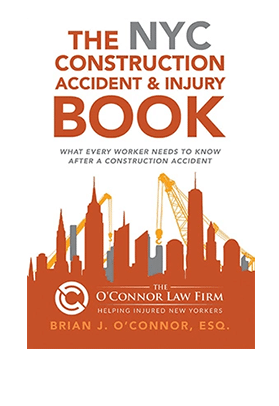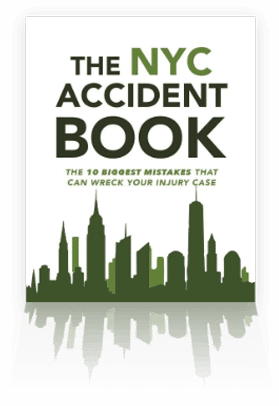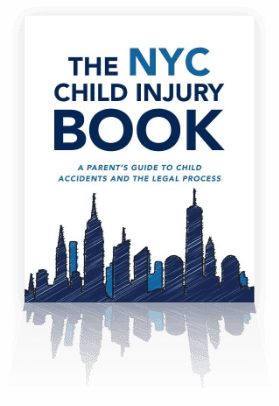Labor Law 240(1): Legal Protection for Fall-Related Injuries in New York
The construction industry is booming in New York City. In every borough and on practically every street some new building is going up or an existing building is being repaired. Although construction is a great job, it is also a dangerous one. In particular, construction often requires that workers scale great heights, which increases the odds they will suffer an injury in a fall.
Indeed, federal statistics show that falls are a leading cause of workplace injuries. According to the Centers for Disease Control, almost 800 people died in a work-related fall in 2014. If you’ve fallen while working, please contact The O’Connor Law Firm for more information. You might have a legal right to sue for compensation.
Understanding New York Labor Law 240(1)
Also called the “Scaffold Law,” Labor Law 240(1) protects workers who are in danger of falling because they work at great heights. Specifically, the law assigns responsibility to building owners and contractors the responsibility to protect workers by constructing scaffolding, ladders or other supports if they are engaged in certain activities, like demolition, painting, or repair. The law also covers someone who is injured when an object falls from a height and strikes them.
This law is crucial because it removes any doubt about legal responsibility for worker safety. New York is one of the few states that has a specific law protecting workers, and many contractors are not happy with it.
Like all laws, Labor Law 240(1) is written in confusing language. Fortunately, an attorney can help review whether it applies to your case.
Exceptions to Labor Law 240(1)
This law does not apply to all workers who use ladders or scaffolds or otherwise work up high. Specifically, the law exempts owners of one- or two-family buildings who do not supervise a workers’ activity. If someone hires a painter to work on their single-family home, then they are not subject to Labor Law 240(1) if the worker falls off a ladder.
However, the law certainly applies to most medium or large construction projects in the city. If you are hurt in a fall, then you should at least contact an attorney to review your case.
Legal Liability Following a Fall in New York
Many workers suffer horrible injuries in falls, including:
- Head injuries
- Brain injuries
- Cervical fracture
- Broken ribs
- Shoulder injuries
- Back injuries
- Paralysis
- Spinal column injury
Labor Law 240(1) assigns liability for a fall to the jobsite owner or contractor. That is excellent news for the worker. The law doesn’t allow a contractor or building owner to claim the worker was negligent, which is a favorite tactic contractors use to reduce their liability. For example, they’ll claim a worker wasn’t watching where he stepped, so he was partially to blame for falling off a scaffold. Instead, contractors and building owners are strictly liable under the law as long as a violation of the statute was a cause of the accident.
Suing for a Fall under Labor Law 240(1)
Generally, workers’ compensation in New York prevents workers from suing their employer. That’s the bargain involved with workers’ compensation: you get medical and wage loss benefits but, in exchange, you give up the ability to sue your employer.
Labor Law 240(1), however, is an exception. It allows workers to sue in two fall-related situations:
- The worker fell from a height and was injured.
- An object fell off scaffolding or ladders and injured the worker.
Workers who bring a claim under 240(1) typically receive much more in compensation than if they only brought a workers’ compensation claim.
Here is an example: the workers’ compensation system only pays job loss benefits at a fraction of your average weekly wage. If you made $600 a week, then you might only get $400 at most. That represents a serious loss of income. With a lawsuit under section 240(1), however, you can seek full compensation for all your losses, including lost income.
Contractors and Owners Try to Get Around Liability
Unsurprisingly, contractors and owners try to reduce their liability. The good news is that it is very difficult for them to do so. In some narrow situations, they might contractually shift liability to a subcontractor. So, if the general contractor hires a scaffolding company, their agreement could shift liability to the subcontractor.
Defendants also try to shift liability to the worker—which is much harder to do. Although this is a strict liability law, defendants sometimes argue a worker is solely responsible for the injury. As an example, a worker might have set up his own ladder in a careless manner on sloping ground. If it slips out from under him, he is solely to blame. Defendants might also argue a worker refused to use safety devices provided (the so-called “recalcitrant worker” defense).
Deadlines for Filing Suit
If you were injured in a fall-related accident, you have a limited amount of time to sue. New York’s statute of limitations gives workers three years from the day of the accident. This is a critical deadline. Wait too long, and you will lose out on the ability to hold the building owner or contractor liable for your injuries.
Eligibility to Bring a Lawsuit Under 240(1) for a Fall or other Gravity-Related Accident
To qualify to bring a claim under this section, you must have been engaged certain tasks:
- Construction
- Alteration work
- Cleaning the structure
- Demolishing the building
- Painting
- Repair work
- Pointing the building
The statute does not cover certain tasks, even if performed at high elevation, like inspecting a job site or engaging in manufacture. If you have a question, contact an attorney to review.
Was Your Accident Fall Related?
The fact that you work at a high elevation doesn’t necessarily mean your injury is covered by Section 240(1). For example, you might have inhaled dangerous chemicals while hoisted up near the roof of a building. But this type of toxic exposure injury is not fall-related. The same is true of a repetitive stress injury caused by making the same rote motion.
A good rule of thumb is to ask yourself if you could have suffered the same injury while on the ground. If so, then it probably isn’t fall related.
Limitation on Lawsuits for Falling Items
As mentioned above, the law also covers workers on the ground who are injured by falling items. However, this doesn’t cover an object which fell because a worker threw it. Nor does it cover parts of the building which fell because they were defective or crumbling.
Instead, the accident must be related to a scaffold, ladder, or other safety device not working properly. For example, sloping scaffolding could cause cans or other items to slide off and fall to the ground. This type of accident would be covered under section 240(1).
Pursuing Workers’ Compensation at the Same Time
Another great thing about Labor Law 240(1) is that it does not prevent a worker from receiving workers’ compensation benefits. Workers’ comp usually pays medical expenses to treat your injuries. Because these benefits are provided without regard to fault, workers receive immediate medical care, which helps a worker make a quicker recovery.
If you pursue a lawsuit under section 240(1), you can still receive workers’ comp benefits. The two laws are not mutually exclusive.
Bringing a claim under the labor law can increase the amount of compensation. In particular, you can seek pain and suffering damages, which are not available under workers’ comp. In this way, we help make injured construction workers “whole” after an accident.
Contact Our Firm Today
New York’s labor laws are critical sources of protection for injured workers, but they are not the easiest laws to understand. If you were hurt in a fall, please contact us today. The O’Connor Law Firm can protect your rights to workers’ compensation benefits. We will also analyze whether you can bring a lawsuit under section 240(1). Call today to schedule a free consultation with our construction accident attorney.




